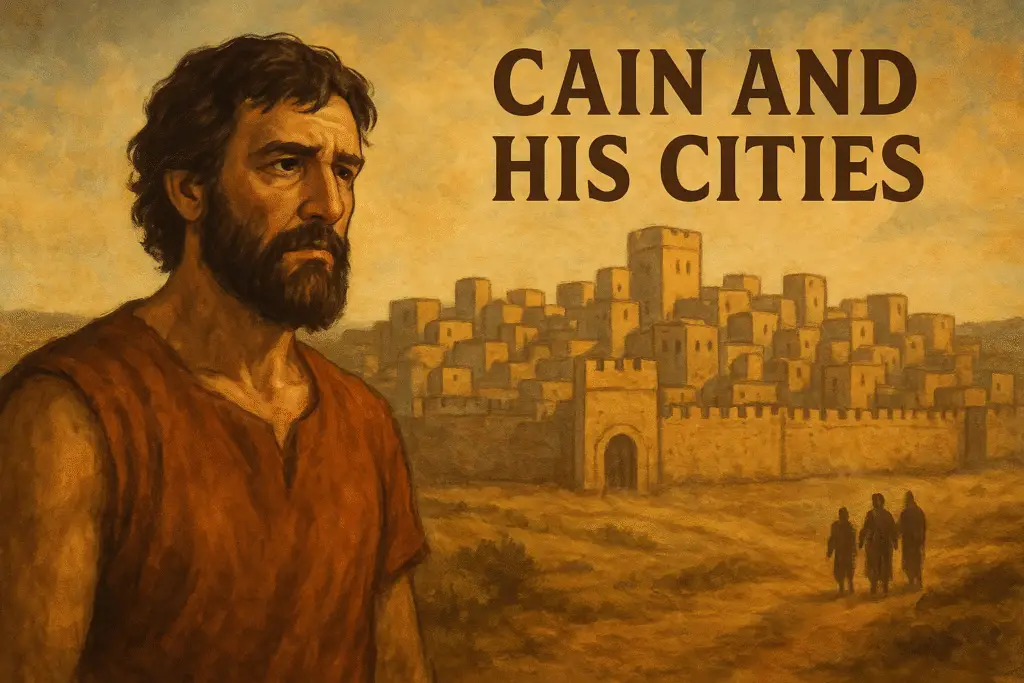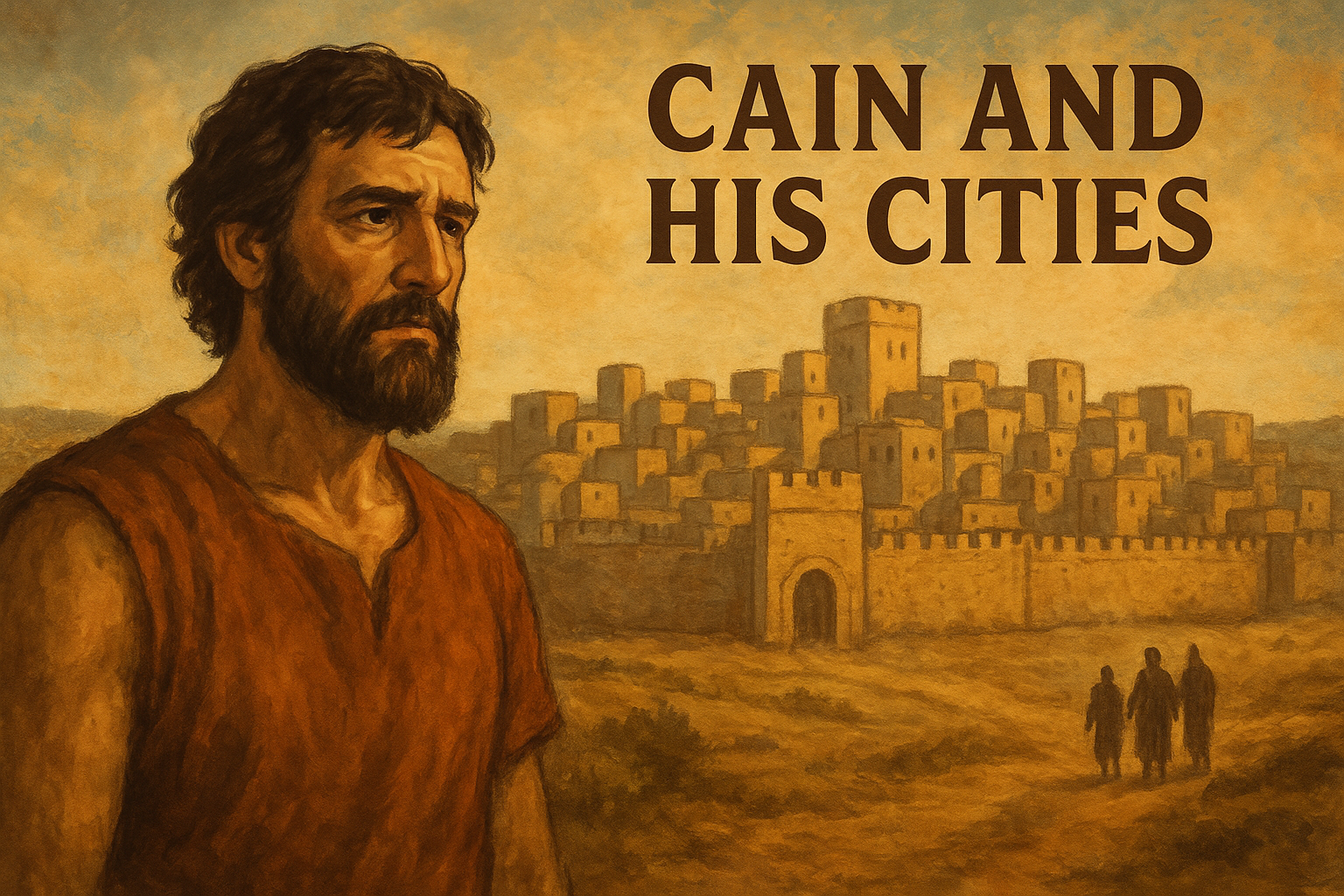
Cain’s Punishment of Wandering
After Cain murdered Abel (Genesis 4:8–12), God pronounced judgment on him
The ground would no longer yield fruit for him.
He would become “a restless wanderer on the earth.”
This meant Cain was cut off from the stability of farming life and the security of family inheritance. He carried a mark of alienation, moving without rootedness.
The Pain of Rootlessness
Wandering created fear and insecurity in Cain. He feared being attacked or destroyed by others (Genesis 4:14).
To wander is to lack a home, stability, or protection. For Cain, every step reminded him of his separation from God and from the land of blessing.
The Desire to Establish Stability
Out of this deep fear and instability, Cain sought a way to anchor himself.
The solution he found was to build a city, (Genesis 4:17: “Cain was the Frist Man to build a city, and he named it after his son Enoch”).
By building a city, Cain tried to reverse the curse of wandering:
Walls gave protection from danger.
Settlement gave roots instead of rootlessness.
Community gave him identity and continuity through his descendants.
The City as Man’s Solution
Cain’s city was not just physical but symbolic:
It was a human attempt to replace the security of God’s presence with man-made security.
Instead of living by faith in God’s protection, Cain built structures to guard himself.
This marked the beginning of urban civilization—where human effort seeks to create stability, identity, and protection apart from God.
The Legacy of Cain’s City
The city was named after his son, showing Cain’s desire to leave behind a legacy.
However, Cain’s line later produced violent and prideful descendants like Lamech (Genesis 4:23–24), showing how the city also became a cradle for human pride, culture, and rebellion against God.
In contrast, God later chose Abraham and Israel to build a community based not on walls but on covenant faithfulness.
Cain’s wandering experience his fear, instability, and alienation pushed him to build cities as a way of creating security and permanence.
The city was his human solution to the curse of rootlessness, but it also symbolized humanity’s attempt to find stability apart from God.
spiritual lesson from Cain’s wandering and his building of cities
Man’s Condition of Wandering
Spiritually, all humans share Cain’s experience of wandering:
We seek belonging but feel restless.
We try to escape guilt, fear, or emptiness by moving from one pursuit to another.
St. Augustine described it well: “Our hearts are restless until they find rest in You, O God.”
Modern “Cities” We Build
Just as Cain built a city to cover his insecurity, today we build “invisible cities” to protect ourselves
Career & Achievement → to prove we have worth.
Wealth & Possessions → to create a sense of safety.
Social Media Identity → to carve out belonging and recognition.
Pleasure & Distraction → to escape the pain of wandering hearts.
These are not wrong in themselves, but when they replace God, they become false shelters.
The Danger of Man’s Solutions
Cain’s city was strong but still built on fear and alienation.
Likewise, our “cities” may give temporary comfort, but they cannot heal the root of wandering—separation from God.
Without God, our structures become prisons of pride, comparison, and anxiety.
God’s True City
The Bible contrasts Cain’s city with God’s city:
Abraham looked forward to “the city with foundations, whose architect and builder is God” (Hebrews 11:10).
Revelation ends with the New Jerusalem, a city not built by wandering men, but by God’s hand, where there is no fear, no insecurity, no curse.
The Lesson for Us
Cain teaches us that fear and insecurity can drive us to build without God.
But God invites us not to hide in walls of our own making, but to dwell in Him as our refuge.
Jesus said: “Come to me, all you who are weary and burdened, and I will give you rest” (Matthew 11:28).
